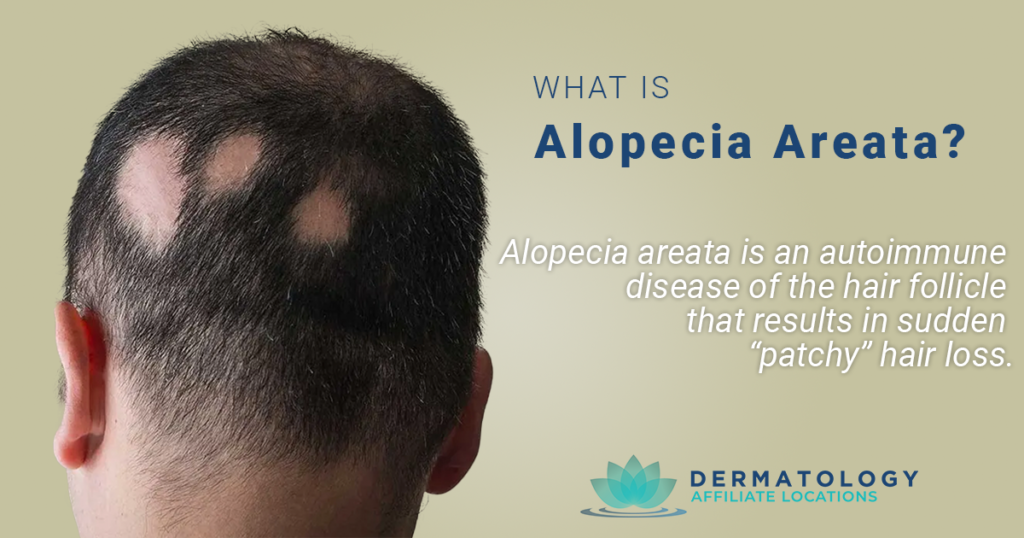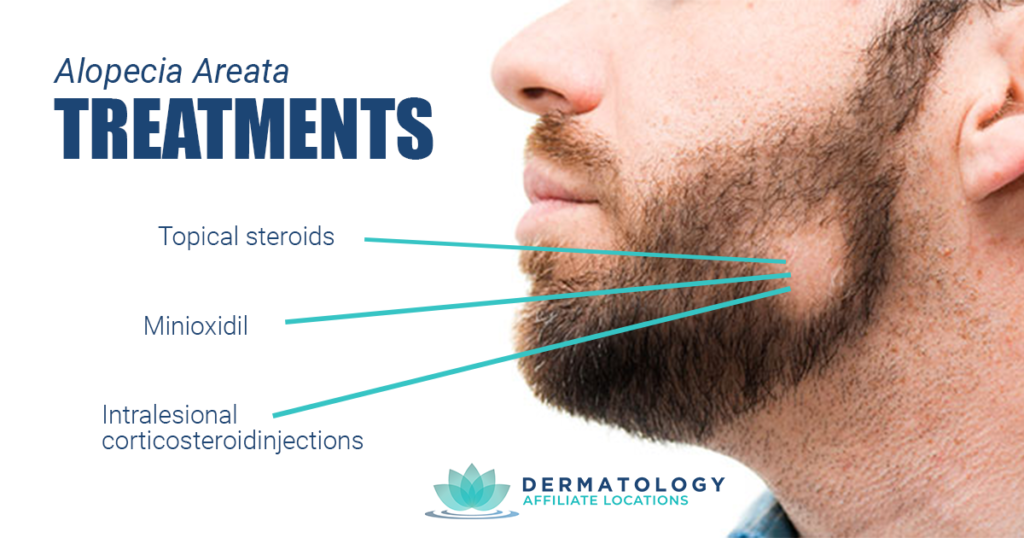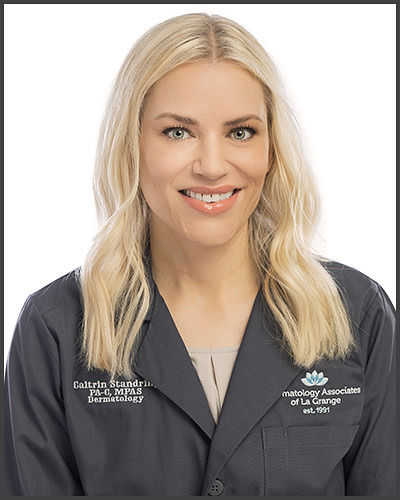Alopecia Areata
When it comes to hair loss, there are many reasons for why it could be occurring but no matter the differences, it still causes the same frustrations for those suffering. In some cases, an autoimmune disease of the hair follicle can result in this, known as alopecia areata.
What is alopecia areata?
“An autoimmune disease of the hair follicle that results in sudden “patchy” hair loss.”

Where does the hair loss occur?
Alopecia areata can present on the scalp, beard area, eyebrows, eyelashes, or body hair.
“In severe cases, all or most of the hair on the scalp is lost, called alopecia totalis. In even more severe cases, both the scalp and body hair is completely lost, which is referred to as alopecia universalis.”
Are there any other clinical findings or symptoms associated with alopecia areata?
Other than the typical few small round patches of hair loss, the nails can also be affected.
“Pitting” and “ridging” of the fingernails can be experienced. Some patients may feel a burning sensation on the scalp.
Who experiences alopecia areata?
This condition is seen in all ages, ethnicities, and sexes, but most commonly occurs between 5 and 40 years of age.
Alopecia areata is more prevalent in patients with other autoimmune diseases as well as Down syndrome.
How long does the hair loss last?
Unfortunately, alopecia areata is an unpredictable condition with an unknown duration, severity, and frequency.
“In some cases, the areas of hair loss can spontaneously regrow without treatment within one year. After hair regrowth is achieved, recurrent flares are common.”
What does the hair look like when it grows back?
Sometimes, but not always, the hair that regrows in areas of hair loss is discolored. The discoloration is usually gray or white.
This may be permanent or temporary.

How is alopecia areata treated?
While there is no cure for alopecia areata, it can be treated medically, with variable success rates.
The greater the extent of hair loss, the more difficult it is to achieve hair regrowth. Areas of hair loss are most commonly treated with topical high potency steroids, topical minoxidil, or intralesional corticosteroid injections.
“I like to treat my patients with a combination of these therapies in order to try to maximize the stimulation of hair growth.”
Current clinical trials with new and emerging therapies are showing improved success rates for both alopecia totalis and alopecia universalis. Alopecia areata is a benign condition, so treatment is completely optional and patient dependent.
If you’re seeking treatment or need to visit a dermatologist to be sure of your condition, book an appointment with us today!
About Caitrin Standring, PA-C

Caitrin is a Board-Certified Physician Assistant in Dermatology. She completed her undergraduate studies at the University of California Santa Barbara, earning a Bachelor of Science in Mechanical Engineering. Caitrin then attended graduate school and received her Masters of Science in Physician Assistant Studies from Concordia University of Wisconsin.
Prior to joining our practice, she worked as a Board Certified Physician Assistant in Dermatology at a private practice in downtown Chicago and the northwest suburbs. Caitrin is trained in cosmetic, medical, and surgical dermatology, and manages a full spectrum of dermatologic conditions.
Her professional memberships include the Society of Dermatology Physician Assistants and the Illinois Society of Dermatology Physician Assistants.
You can learn more about Caitrin here.

